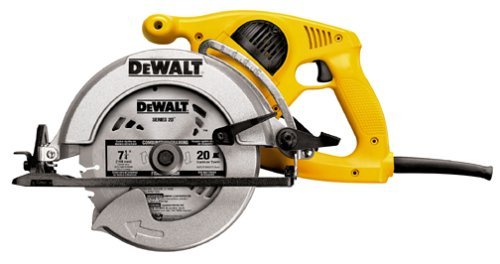Sometimes I need to set off many edges. Sure, one or two edges, that I'm not a machine. But today was a stack of good 40 wooden parts, all of which needed a clean, straight edge, perpendicular to the already planned surface here. Since I like to reach back on the milling table. He can replace although no planning machine, but adding edges, it's so wonderful, clean, safe and fast.
To add on the milling table, you need a cutter with a diameter as large as possible. To get a saw or cutter you need to check the review first. There are lots of circular saw reviews at online you can find and read. I guess my biggest router, a folding head with reversible knives, which has 50 mm in diameter and 30 mm in height. The larger the diameter, the more cleanly the milling image is. The shaper fence is set so that the highest point on the cutting flight circle of cutter with the front edge of the milling stop flush. Simply, the cutter is set flush to the stop.
Check you can a setting quite well with a straight piece of wood. That puts you at the stop and turns the cutter against the direction of rotation. He scrapes on the wood, or even puts it off; the router is still, the fence must be forward. It is approaching the right attitude, turning the router in the direction of flow. If he gets barely to cover the wood against the fence and about shifting 1-2 mm, you have the right attitude.
Pushing a piece of wood at the stop and the current router over now nothing happens. The router decreases no material. He does when right stop cheek to the left is moved back. The next the right stop can be adjusted to the rear, the more material takes away the cutter.
Is her shoulder in but no right jaw, which can be adjusted backwards? Also not a problem. Then you underpin just the left side of the stop a little. Little millimeters are 1-3. Depending on whether you are using a small router and a router is weaker, or a great router in a router is strong. The stronger the thrower and the larger cutter, can at once more away are milled.
The settings are made, think of your fingers. Use a circular saw which prevents can get your fingers in contact with the cutter. And you're ready to go. The crooked edge runs against the fence along on the cutter by now. The edge is hollow, so much the better, then you need exercise the edge really only to push and if possible early pressure against the left (rear). The edge is oval; it will be a little more difficult. Then you put pressure first on the end of the right (front) stop. Its wood moved away at the other end of the stop. Now slide the wood to the router. Only when it reaches the left (rear), provide even pressure against it and keep the pressure there.
However, this method has its limits. Of course, the material thickness of the work pieces through the length of the cutter is limited. The length of the work pieces should not exceed also double the entire stroke length; otherwise the dressing becomes increasingly difficult. And last but not least the cutter must be exactly perpendicular to the machine table. Try it out of quiet times. If you have a little practice, this works really well.
My 40 edges were set up of the milling table included in 20 minutes straight and absolutely perpendicular. Finally, I had to sweep even no chips thanks to extraction.
